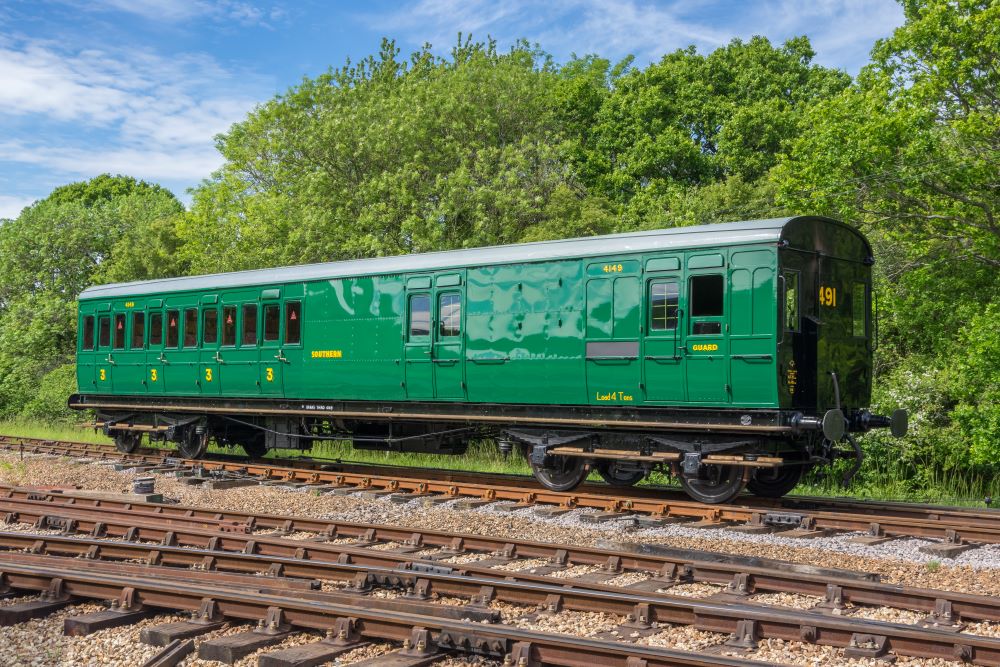Home » Heritage » Key Railway Anniversaries » 100 Years of the Southern Railway
The Southern Railway: 1923 – 1947
In 2023 we’re celebrating the 100th anniversary of the Southern Railway. The Southern Railway only existed for 24 years but had a dramatic impact on the Island’s railways, and this period is remembered as something of a golden era.
At Havenstreet you can follow our exhibition trail around the site. Look out for the SR100 logo around the station and further information in the Museum Gallery (inside the Shop), in the Freshwater Room and in our Train Story Discovery Centre.

Before the Southern Railway
On our Island the three companies then in existence – The Isle of Wight Railway, The Isle of Wight Central Railway, and The Freshwater, Yarmouth & Newport Railway – became part of the Southern Railway. At the time all of the Island’s railways were in need of investment and operated with veteran locomotives and carriages.
Click on the images below to see videos of the three lines [External link to YouTube]
Southern Railway Modernisation
With the Island railway companies and their ferries now part of the newly formed Southern Railway, no time was lost in improving and upgrading the rather tired network.
New locomotives and carriages were transferred from the mainland. The track was gradually renewed and doubled from Brading to Sandown to offer a more intensive service. At Haven Street the station was rebuilt to what you see today, and a loop put in so that trains could pass each other.
On the river Medina, between Cowes and Newport, a new wharf was constructed, mainly for the importing of coal. The paddle steamer fleet was renewed and facilities at Ryde Pier Head were enhanced.
The SR introduced its own, strong brand image and heavily promoted the Island as a holiday destination, introducing holiday runabout tickets for 7s 6d (37½p) for a week’s Island-wide travel.
Ferry Connections
The Southern Railway inherited two ferry routes to the Isle of Wight. At the eastern end of the Solent, the Portsmouth – Ryde passage was the main link to the Island, carrying a million passengers in 1922.
West Wight was served by a passage from Lymington on the mainland to Yarmouth. Passengers disembarking at Yarmouth were faced with a walk to the station if they were travelling onwards by train.
Cars could be transported by tow-boat and landed on Ryde Sands. Recognising the inadequacies of this primitive arrangement, the Southern Railway commissioned three pioneering car ferries and constructed a new slipway at Fishbourne Creek. The Portsmouth to Fishbourne ferry, started by the Southern Railway and now operated by Wightlink, lives on as the Island’s busiest link to the mainland.

OPENING DAYS + TIMES
Our Havenstreet booking office and station open at 9.30am every day when trains are running…

EXCLUSIVE EXPERIENCES
Go on treat yourself, whether you want to be at the coal face with the immersive Footplate Experience or you want absolute luxury…

TRAIN RIDES
The Isle of Wight Steam Railway will take you back in time to the heyday of steam, our traditional steam trains…

















